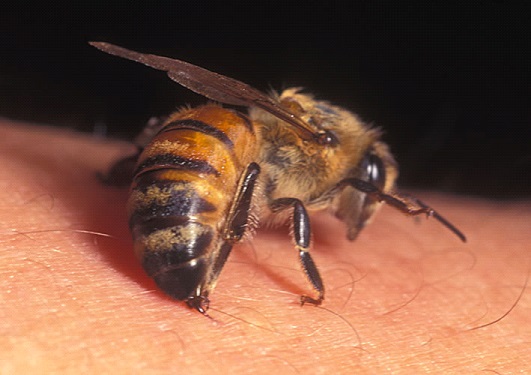Bee Stings Symptoms, Causes, Risk Factors, Diagnosis and Treatment

What Are Bee Stings ?
It tends to be a common outdoor nuisance. Generally, bee sting is extremely annoying, whereas home treatment is merely enough to relieve the pain associated with bee stings. However, people those are allergic to it or have gotten stung several times can develop a more intense reaction that needs prompt treatment.
A number of preventive steps can help avert wasp, hornet and bee stings.
What Are The Symptoms Of Bee Stings ?
Signs of intense reaction (with anaphylactic shock) are:
- Nausea.
- Diarrhea.
- Loss of consciousness.
- Stomach cramps.
- Reddish rash/hives.
- Dizziness.
- Itching.
- Hoarseness or wheezing.
- Difficulty to swallow and breathe.
- Swelling around the tongue, lips, eyes or throat.
In majority instances, a bee sting tends to root minor signs around the area of sting, such as:
- Redness.
- Swelling.
- Pain.
- Burning or itching.
When Is The Right Time To Seek Medical Aid ?
Generally, minor reactions do not need any medical help, and thus can be treated with self care measures. However, it is advice to seek medical assistance in case of the following:
- Symptoms associated with bee stings failed to improve even after days.
- Have several stings.
- Have developed intense form of reaction.
What Causes Bee Stings ?
Clearly, the venom of bee stings consists of proteins that can affect our immune system and skin cells. Coming in contact with the protein can cause swelling and pain encompassing the area of sting. Though, individuals those with the allergy to bee sting can experience a more intense reaction after the exposure to bee venom.
What Are The Risk Factors Of Bee Stings ?
The following factors are known to increase the chances of bee stings:
- The person lives at a place where the beehives are nearby or where bees are active.
- A job or hobby involving outdoor activities.
Besides, one is at an increased risk of allergic reaction in case he or she has already experienced it in the past, though, even if the reaction was mild. In addition to this, adults are more prone to develop more-intense reactions as compared to children, and are more reported to die due to anaphylaxis. Anaphylaxis is a serious form of reaction that affects many organs of the body, and thus needs immediate medical aid.
How Is Bee Sting Diagnosis ?
In case you have experienced a reaction in the past, then this indicates your possibility of being allergic to bee venom. The health care provider can either suggest a particular or both of the below mentioned tests:
- Skin test.
- Allergy blood test.
How Is Bee Stings Treatment ?
In case you have not developed a reaction against the bee sting, then you do not need any medical aid, and can treat yourself through home remedies. However an allergic reaction or multiple stings needs medical treatment as early as possible. The doctor will ensure the complete removal of stinger and will take steps to reduce the intensity of symptoms. At times, antihistamine helps to ease the signs of bee stings.
By : Natural Health News




